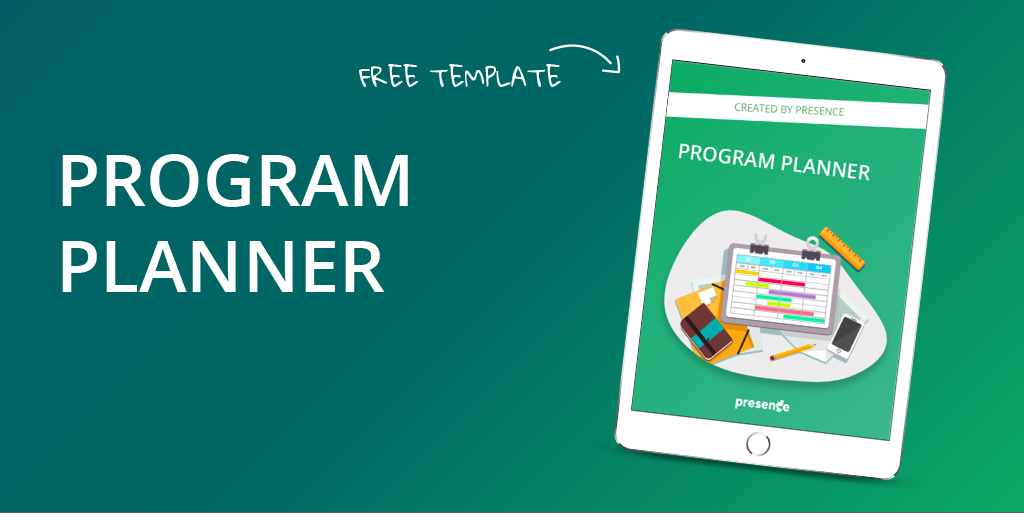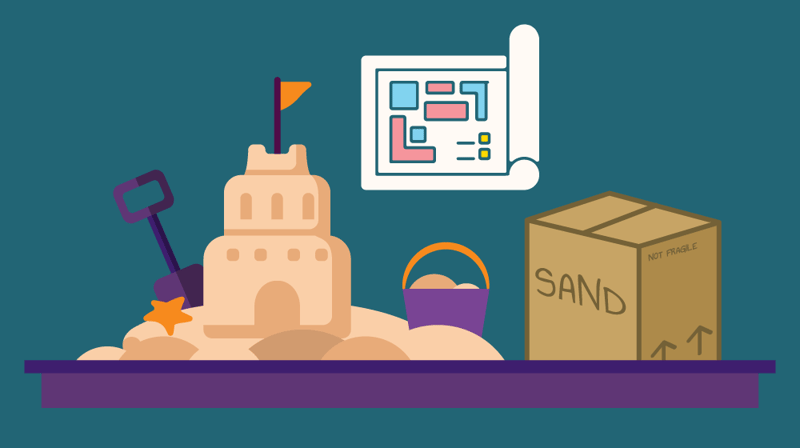I have a secret to tell you that is guaranteed to improve the quality of your events.
The secret: event logistics. No, really. Event logistics may not seem like an exciting topic but they build the foundation for a great experience.
Perhaps you don’t typically have to think about logistics because your institution’s event management team has got it covered. Your media services department, your conference or external event department, or your student center operations department might all handle different logistics for you.
But given my personal experience in these types of roles, I’d like to share some of the top wisdom that I think will help event planners of all kinds improve their skills.
From event layout tips to accessibility and emergency protocols, I’ll help you get into the mindset of a skilled event management pro.
1. Seating
Determining the right amount of seating can be a tricky balancing act. If you ask for too few seats to be set up, you may end up scrambling to find additional seating when attendees arrive. But if you ask for too many seats, your attendees may be underwhelmed by a room full of empty seats.
My rule of thumb is to ask for 20% more seats than you think you will need. So, if you anticipate 100 attendees, ask for 120 seats. This way, you will have some overflow seating if needed. The event planning experts at Social Tables wrote an article on how to calculate your event’s capacity.
If tables are included in your setup, you will need to convert the number of seats into the number of tables to ask for. For example, a six-foot round table typically seats eight people. So if you want 120 seats, ask for 15 tables.
When it comes to seating, there are several ways to build in accessibility for wheelchairs and other mobility aids. It’s good practice to remove some chairs from a row of lecture-style seating and mark it off. If someone comes to the event with a wheelchair and this area is not marked off before their arrival, it can be difficult to make room after other attendees have already arrived. These diagrams provide details about how much space to provide when removing chairs.
You should also be ready to remove chairs from a table in order to make room for a wheelchair during a banquet-style event. This may need to happen right after an attendee arrives, so that they can maintain autonomy in selecting their table.
2. Tables
It’s all too easy to forget about the tables that you may need for non-seating purposes.
For instance, you might need a table for event check-ins, several tables for the buffet, and two more tables for activities, such as arts and crafts.
So, don’t forget to request these additional tables! There are a finite number of tables in inventory; if you don’t ask for them beforehand, they might not be available the day of your event.
Also be sure to plan out where you want the tables to go, so that your event management team can alert you to any potential fire code issues, as well as place the tables quickly and accurately before the event.
3. Green Rooms
A green room (also called a dressing room) is a private area where performers can relax before their show.
Some event venues may already have green rooms built-in. But if yours doesn’t, you can work with your event management team to create one if and when the need arises.
First, find out how many people will need to use the green room. Is it a single performer or a large group? This will determine whether you will need to use a small room (such as someone’s private office) or reserve a larger space like a conference room. The group may also want a separate room for their entourage or if they simply want more privacy for individual group members.
When possible, try to give your performers the ability to secure their belongings in the room using a locked door. Ideally, you could give them a key or keycard access to that room; otherwise, make sure that someone from the event management team is available to unlock the door for them whenever they leave the room.
Green rooms should be close to the primary performance area (usually the stage), but away from any corridors that attendees may pass through. Performers also appreciate when their green room is near a restroom.
A nice touch would be to make the room cozy with comfortable chairs or a couch, a hospitality station with a single-serve coffee and tea maker, and tables. Also, make sure that there is enough privacy in the room by covering interior windows that allow people to look into the room. If the performer has a hospitality rider, be sure to review it before preparing their room so that you can make any necessary purchases.
4. Arrive Early
Although your event management team should have a good understanding of what physically needs to be set up for your event, they may not know if you need to enter a space early to organize check-in tables, put up decorations, or give performers the chance to do a soundcheck.
If you need to enter a space early for any reason, build that time into your reservation. If it takes the setup crew an hour to arrange the furniture and set up the A/V system, and you need 30 minutes to do a soundcheck and decorate, then you need to reserve an hour-and-a-half block before the event.
Not building enough time into your reservation could mean that the A/V won’t be set up for the soundcheck when performers arrive, among other challenges. Always check with your event management team regarding how much time they’ll need for set up.
5. Mood Lighting
Stage lighting and uplighting can help you achieve the desired ambiance of any event.
For example, if an event is supposed to evoke school spirit, the lighting can be set to display your school’s colors. Colors could also be coordinated in accordance with a theme, such as using blue for an ocean-themed event.
Ask your event management team what types of lighting they have available. If there will be a performer, refer to their technical rider for their requirements.
6. Microphones
Before we proceed further, you should know the golden rule of microphones: if a microphone is available, use it. Have at least one available for keynote addresses, presentations, panels, and any other program held in an event space larger than a standard meeting room.
As Jessie Ramey points out in her essay “A Note From Your Colleagues With Hearing Loss: Just Use a Microphone Already,” ableism occurs whenever people refuse to use a microphone or forget to have one available. Using a microphone is crucial for helping hearing-impaired individuals to fully engage in the event.
Jessie highlights the need to make microphone use a regular part of event planning with this metaphor:
“Refusing to use a microphone is like scheduling a meeting in a room accessible only by stairs. And then when your colleague in a wheelchair shows up and asks for a ramp so she can attend, you stand at the top of the steps and say, ‘No thanks, I’m good.’”
Now that we’ve established the need to always include a microphone, let’s go over some additional related details to consider.
You should communicate to the event management team what types of microphones you want (wired, wireless, or lavalier) and how many. This team can also help you decide what type of microphones will work best for your event. When in doubt, it’s a lot easier to have extra microphones already set up than to realize that you need another one in the middle of an event.
For additional information about creating accessible events, I suggest reviewing the Accessible Meetings, Events & Conferences Guide and this blog post on incorporating universal design into events, along with this checklist.
7. Emergency Protocols
It’s always a good idea to identify the safety features that have already been built into your venue.
If you are unfamiliar with the location’s safety features, ask your event management team to show you the locations of:
- Fire alarm pull stations
- Fire extinguishers
- First aid kits
- AEDs
- Courtesy phones, one-push emergency call boxes, or similar communication devices
- Emergency exits
Your institution most likely has protocols that dictate what should happen in the event of an emergency, such as natural disasters, power outages, reports of a suspicious or dangerous person on campus, and major medical incidents.
Review these protocols and how they would apply during your time in that particular event space. For example, know where the evacuation routes are, which locations are designated as staging areas, and how to get to the basement level during severe weather events.
Emergency protocols only work well if the event management team, the planners, and the attendees all know what to do during an emergency.
At the beginning of an event, be sure to have someone announce to attendees where the exits and evacuation routes are, including routes for people with mobility impairments.
Be sure to also check in with the event management staff about their expectations for you during an emergency. For example, are you expected to help guide attendees towards the exits during an evacuation? Are you allowed to use an onsite AED if you are certified to use one?
8. Extra Supplies
One of the golden rules of event management is you be prepared. You never know when batteries will die or you’ll need an extra charging cord. Although the event management team might have some of these supplies, it doesn’t hurt to put together your own event kit that you can transport to all event locations.
Here are some items to consider including in your kit:
- Legal pads or notebooks
- Writing utensils
- Sticky notes or index cards
- Printer or scrap paper
- Slide advancer
- Extra batteries
- First aid kit
- Portable power bank
- Universal charging cable
- LED flashlight
- Scissors
- Duct tape and painters tape
- Small toolbox (with a screwdriver, hammer, and wrench)
- Clipboards
- Name tags and pronoun stickers
When deciding what to pack in your kit, you can ask yourself these four questions that Mireille Pitre poses in this Pointers For Planners article:
- What will you do if something that you ordered for the event doesn’t arrive in time?
- What happens if a vendor or volunteer is late?
- What tools and information are essential for the event to proceed?
- What problems have you encountered in the past that you’d like to avoid?

Even simple logistical tweaks like the ones mentioned in this article can improve an event.
The next time that you are planning an event, try some of these tips for a more streamlined planning process and a better attendee experience.
What tips did we miss? Connect with us on Twitter @themoderncampus and @JustinTerlisner.





